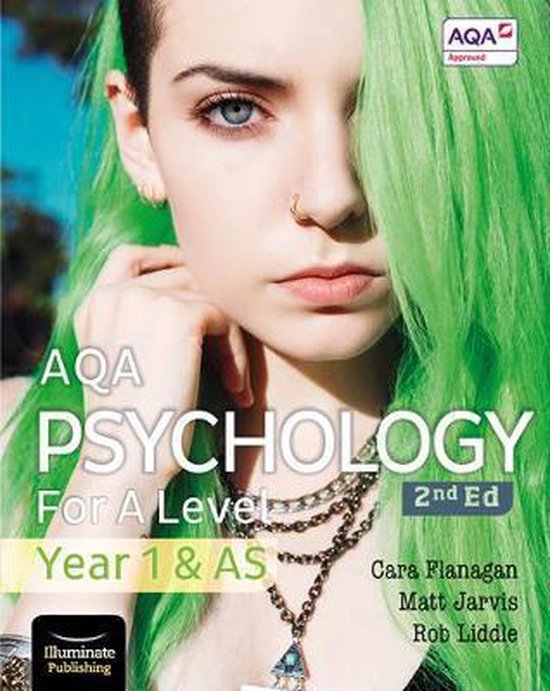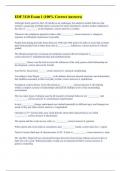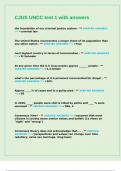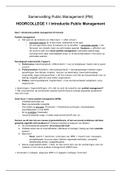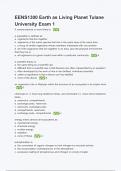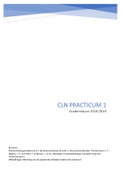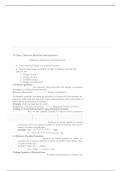Attachment
,Caregiver-infant interactions
❏ Infancy: The firsts two years of life where babies do not have speech
❏ Non verbal communication is very important at this time as it can have an
effect on the type of attachment
❏ The more sensitive an infant is to another person’s signals the deeper the
attachment
❏ Caregiver-infant interactions are largely studied through controlled
observations
Types of caregiver-infant interactions
❏ Reciprocity
❏ Interactional synchrony
,Caregiver-infant interactions
Reciprocity
❏ “When infant and mother respond to each other’s signals and each triggers a response
from the other (turn taking)
Alert phases
❏ Babies have ‘alert phases’ where they give signals to show that they are ready to interact
❏ E.g eye contact
❏ Feldman and Eidelman - mothers pick up on and respond to alert phases ⅔ of the time
❏ Finegood - external factors such as stress can affect how much a mother picks up on alert
phases
❏ Brazelton - how sensitive a caregiver is to infant’s signals i.e how quickly they respond to
them effects future attachment between caregiver and infant
❏ Brazelton - reciprocity is like a dance
,Caregiver-infant interactions
Interactional synchrony
❏ “When mother and infant interact in such a way that their actions and
emotions mirror the other”
❏ Beginnings of interactional synchrony have been observed in babies as
young as 2 weeks old
❏ Said to be important for the development of mother/ infant attachment
,Caregiver-infant interactions
Findings
Research into interactional synchrony
❏ Meltzoff and Moore found an
❏ Meltzoff and Moore conducted a association between the facial
controlled observation expressions/ gestures shown by the
❏ They observed infants’ responses to 3 adults and the actions by the babies
different facial expressions and 1 hand ❏ Isabella et al found that high levels of
gesture synchrony were associated with
❏ These interactions were recorded and better quality attachments
watched back by an independent
observer who did not know what the
babies had seen
❏ Observers had to note down each time an
infant had opened their mouth, closed
their mouth, stuck out their tongue and
put their tongue back in their mouth
, P Other research has not been able to find the same results as
Caregiver-infant interactions Meltzoff and Moore
Evaluation: E Koepke et al failed to replicate Meltzoff and Moores findings in
a similar study
P Caregiver-infant interactions are usually filmed in a
laboratory However Meltzoff and Moore argued that it was because Koepke’s
study was not as well controlled as theirs
E Observations of mother/infant interactions are usually well
controlled procedures which are filmed from many angles Gratier however stated that many studies have shown the same
patterns of interaction between mothers and babies
This enables fine details and accurate info to be gathered
C This lack of research support suggests that the results of
Means that studies can be repeated and inter-rater Meltzoff and Moore are unreliable and more research is required
reliability can be established to validate their findings.
C Increases the validity and reliability of studies in P Research into interactional synchrony is socially sensitive
caregiver-infant interactions
E Research suggests that some ways of raising children are better
P Hard to interpret a baby’s behaviour than others
E Babies are very young and are immobile most of the time It implies that mothers who go back to work when their babies are
very young may be damaging their attachments with their
movements/ expressions are often very subtle which children
questions if they are in response to an adult or is it just a
small twitch or passing wind? This is because there are less opportunities for interactional
synchrony and Isabella found that it is important for future
C Therefore we cannot be sure if behaviours have any attachments
special meaning
C Suggests mothers should not return to work so soon
, Review answers:
Caregiver-infant interactions 1. The more sensitive an infant is to another person’s signals the
Review questions: deeper the attachment
2. Through controlled observations
1. What is the relationship between the sensitivity of an infant 3. When infant and mother respond to each other’s signals and each
to signals and attachment? triggers a response from the other
2. How are caregiver infant interactions investigated? 4. Signals to show that babies are ready to interact
3. What is reciprocity 5. Eye contact
4. What are alert phases
6. Feldman and Eidelman, Brazelton, Finegood
5. Give a behaviour that shows a baby is ready to interact with
7. ⅔ of the time
a caregiver
6. Name the researchers involved in the study of reciprocity 8. Stress
7. According to Feldman and Eidelman how often do mothers 9. Finegood
pick up on alert phases 10. how sensitive a caregiver is to infant’s signals i.e how quickly they
8. What external factors affect a mothers ability to pick up on respond to them effects future attachment between caregiver and
alert phases? infant
9. Who said external factors affect a mother’s ability to pick up 11. Reciprocity is like a dance
on alert phases? 12. When mother and infant interact in such a way that their actions
10. What did brazelton say about reciprocity? and emotions mirror the other
11. How did brazelton describe reciprocity? 13. 2 weeks old
12. What is interactional synchrony? 14. Meltzoff and Moore, Isabella, Koepke, Gratier
13. The beginnings of interactional synchrony have been
15. 3 facial expressions and 1 hand gesture
studies in babies young as how many years old?
16. Each time the child opened their mouth closed their mouth, stuck
14. Who are the researchers involved in interactional
synchrony? their tongue out and put their tongue back in their mouth
15. What did meltzoff and moore show the babies 17. An association between the facial expressions/ gestures shown by
16. What did the independent researcher have to record? the adults and the actions by the babies
17. What did meltzoff and moore find? 18. high levels of synchrony were associated with better quality
18. What did isabella state about interactional synchrony? attachments
19. Outline one strength of research into caregiver-infant 19. Well controlled obs = enables fine details = increases validity and
interactions reliability of findings
20. Who wasn’t able to replicate Meltzoff and Moore’s findings? 20. Koepke

